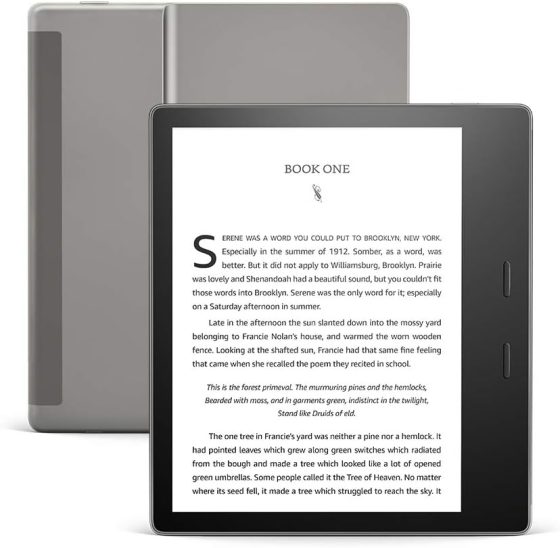It looks like the days of being able to buy premium quality ereaders is slowly coming to an end. With every passing year the overall build quality of ereaders keeps getting cheaper and cheaper.
You used to be able to buy ereaders that were made out of better materials that felt nice in your hand and they looked nice too. Premium ereaders often (but not always) had metal casings and high quality glass front layers. Some had dedicated page buttons and sleek, creative designs (like the Kindle Oasis).
Now everything is plastic-based. The casing is plastic. Flush layers are plastic. And plastic front layers aren’t as clear as glass so the screen often has a fuzzy quality that older ereaders didn’t have.
The one thing about ereaders is they tend to last longer than most handheld electronics. It’s not uncommon for an ereader to last upwards of 10 years or more. If I’m going to buy something and use it that long, I’d much rather pay a little more for something of nicer quality than something with a cheap plastic casing like the basic Kindle or Kobo Clara. But those days are seemingly coming to an end.
There are some nice premium quality eNotes, like the Kindle Scribe and Boox Note Air. But when it comes to smaller ereaders there just aren’t many premium models coming out anymore.
Kindles
The Kindle Voyage was the first premium Kindle, and it was followed by three generations of the Kindle Oasis. But the last Kindle Oasis was released in 2019 and now Amazon doesn’t sell a premium model anymore.
The Signature Edition Paperwhite is pretty nice with the metallic finish on the back and the flush front screen, but the plastic smudge-prone front layer and plastic casing with the same old boring design and awkward power button placement just isn’t on the same level as the Voyage or Oasis.
Kobos
Kobo has never been big on metal casings and premium designs, but they have had some nice ereaders over the years. The Kobo Aura One looked and felt like a premium device, and the Kobo Aura was the first Kobo with a flush front design, but it didn’t last long and both had uneven frontlight issues. Later came the Kobo Forma and Kobo Sage, but it looks like the Sage is on the way out now so Kobo no longer offers anything that could be considered “premium quality”.
Nowadays Kobo insists on using the cheapest plastic they can find, but it’s recycled so that’s supposed to make it okay (hey, Kobo, metal is recyclable too). I know a lot of people love Kobos and I do too, but of all the ereader brands on the market, Kobo’s current lineup feels like they have the cheapest build quality of them all.
Onyx Boox
Onyx releases approximately 327 new devices per year, and some have really nice designs compared to similar devices on the market, but when it comes to their smaller reading-centric models they tend to feel a bit cheaper than their eNote line.
The Boox Go 7 series is pretty nice and could probably be considered borderline premium quality. However, Onyx’s quality control isn’t the greatest and their frontlights often have some unevenness or weird color tone, and for whatever reason Boox devices don’t seem to hold up as well as other brands.
Pocketbook
They aren’t a well-know brand in most English-speaking countries, but Pocketbook has some of the nicer designs on the current market. I’m not sure if they qualify as “premium” but their build quality is better than most. They are a bit more refined and don’t feel as cheaply made as Kobos and the basic Kindle, and most models have dedicated page buttons along the bottom of the screen.
But from my experience Pocketbook’s flush front layers just aren’t very good. They have a cloudier quality than other devices, which makes the text look worse, but maybe they’ve fixed that on their newer models.
Nooks
Nooks tend more toward the middle of the road when it comes to build quality. They don’t feel as cheaply made as some other brands, but they definitely aren’t premium either. B&N did release one premium model back in 2015, the first Glowlight Plus, with an aluminum body and flush front screen, but they went back to their older design after that.


